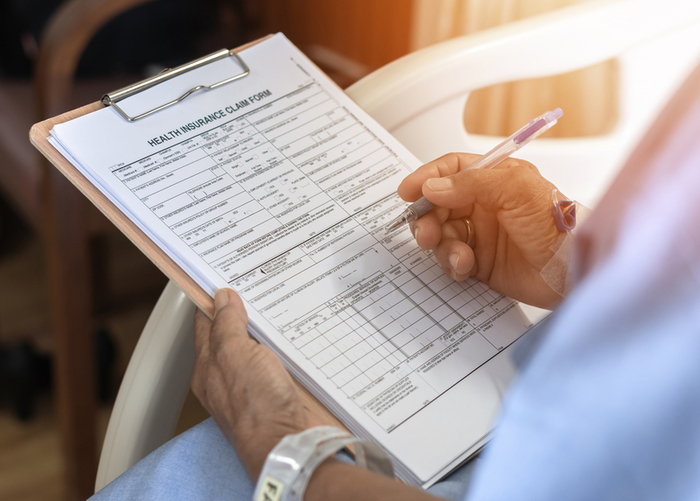- Calls to this hotline are currently being directed to Within Health or Eating Disorder Solutions
- Representatives are standing by 24/7 to help answer your questions
- All calls are confidential and HIPAA compliant
- There is no obligation or cost to call
- Eating Disorder Hope does not receive any commissions or fees dependent upon which provider you select
- Additional treatment providers are located on our directory or samhsa.gov
Eating Disorder Levels of Care: Determining the Best Treatment

Eating disorders are serious mental health conditions, which manifest as unhelpful and unhealthy attitudes and behaviors toward body weight, body image, food and eating.
As such, a combination of medical, nutritional, and psychological interventions are often needed to successfully treat these conditions.
Yet, there are many levels of care for eating disorder treatment, and the most effective program for you or your loved one depends on a number of factors.
Levels of Eating Disorder Care
Just as the severity of eating disorder cases spans a spectrum, so too do the levels of care for treating eating disorders.
Some patients may need to start treatment at the highest level in order to slowly work toward recovery, while others may be able to manage their eating disorder behaviors and obtain a healthy body weight with less intensive programs.
Regardless, eating disorder treatment often follows a path, from most to least intensive care.
Residential Treatment/ Inpatient Hospitalization
Inpatient hospitalization is the most intensive care for eating disorders. It involves admission to a hospital or specialized treatment facility for medical stabilization and is often only recommended for those in crisis. Generally, a patient will remain in this type of highly intensive care for no longer than a few weeks. [1]
Once a patient is considered medically stable, they can transition from inpatient treatment to residential treatment. These programs can last anywhere from several weeks to several months.
This next-highest level of care involves living full-time at a treatment facility, where patients have 24/7 access to medical care and staff. Schedules are highly-structured, and typically include individual and group therapy, meal support, nutritional counseling, medical monitoring, and other forms of treatment.
Partial Hospitalization Programs (PHP)
A partial hospitalization program (PHP) is the first intermediary step between inpatient and outpatient treatment.
While patients live and sleep at home while participating in a PHP, the level of treatment remains intensive, with programs typically running six to eight hours a day, for five or six days a week.
During these sessions, patients generally continue the type of care they received in residential treatment, including:
- Individual and group therapy
- Meal support
- Nutritional counseling
- Medical monitoring
This type of highly-structured program is best suited for individuals who are ready to start incorporating more autonomy into their lives, but could still benefit from a high level of support and care.
Intensive Outpatient Care
Intensive outpatient care (IOP) is another step down from a PHP, giving a patient even more freedom over their movement and choices, while offering them continued access to regular care.
At this stage, therapy sessions may take place up to three times a week. Intensive outpatient care may also include time for group therapy, meal support, and/or nutritional counseling.
This treatment is ideal for patients who are proactively managing their eating disorder behaviors and are ready to begin taking on more social responsibilities, like returning to work or school, but who may still benefit from more intensive or regular check-ins than someone in regular outpatient treatment.
Outpatient Care
Outpatient care is the least intensive level of care for eating disorders. It is typically either the first or the last stage of eating disorder treatment someone receives.
Outpatient treatment may involve seeing a therapist, dietitian, or psychiatrist on a weekly or bi-weekly basis. Individual therapy sessions, nutritional counseling, and medication management are all available at this level.
Outpatient care is most effective for individuals with mild to moderate eating disorder symptoms. The individual should be medically stable, but may prefer ongoing support to help them practice or develop healthy coping strategies.
Determining the Appropriate Level of Care
Different levels of care are available for eating disorder treatment, with each providing different levels of support and intensity. There are a number of factors that may dictate what the most appropriate or helpful level of care will be for an individual. [2]
If you or a loved one is struggling with an eating disorder, there are some considerations to keep in mind when determining the best level of care for your needs.
Severity of Symptoms
The severity of eating disorder symptoms spans a spectrum. Some patients may be able to mostly manage their issues, while others need more help and access to care and support. This can affect the level of care that may be the most helpful for someone struggling with one of these conditions.
The Diagnostic Statistical Manual of Mental Disorders (DSM-5) includes criteria to help determine the severity of an eating disorder.
Professional Opinions
A better, and more accurate, way to determine the severity of an eating disorder is having a medical professional evaluate the situation. A primary care physician, therapist, or psychiatrist may be in a good position to help with this determination.
Healthcare professionals may also be able to refer individuals to specialized eating disorder treatment programs or professionals based on their specific care needs and medical history.
Co-Occurring Disorders
Many individuals with eating disorders also struggle with co-occurring conditions, including both mental health and physical illnesses. Depression, anxiety disorders, and substance use disorders, in particular, commonly co-occur with all types of eating disorders.
When someone struggles with more than one psychiatric or physical condition, it’s important to address all related issues in treatment at the same time. The presence of co-occurring disorders could also change the type or level of care recommended for someone struggling with an eating disorder.
Finding Help for Eating Disorder Recovery
Once you’ve determined the appropriate level of care for you or your loved one, you can begin looking for treatment centers or programs that may offer the best type of help for your situation.
Still, even at this stage, it’s important to keep several factors in mind, to ensure you find the best program possible.
Insurance Coverage
Eating disorder treatment is often expensive, and, depending on the level of care that’s required, the process can also be lengthy.
Most people are unable to afford this type of care out-of-pocket, so when considering which eating disorder program you’d like to enroll in, it’s essential to consider insurance coverage.
Before you even begin looking for specific eating disorder centers, you may want to check your insurance policy or call a representative from your insurance company to confirm the type of care they may cover.
Many treatment programs also employ staff members who are dedicated to helping prospective patients work through insurance questions and difficulties. If you find a program you really like, you should call and make sure they’ll be able to work with your insurance plan.
Center Accreditation
While a number of national and state laws are in place to help ensure staff members at medical clinics are highly qualified, it’s not required for a treatment center to receive accreditation.
This type of certification indicates that the treatment program and quality of care provided meets certain industry standards, or has been approved by industry-leading organizations. [3] While eating disorder treatment is a highly personal experience, working with an accredited center typically increases the chances that you’ll have a successful experience or receive positive care.
Eating Disorder Recovery
If you or a loved one are struggling with an eating disorder, it’s important to seek out help. These conditions are dangerous, and can be deadly if left untreated.
A primary care physician, therapist, or other trusted medical professional is a great place to start. These experts will likely be able to provide you with useful information or guide you toward the next best steps.
If you’d prefer to not discuss this sensitive situation face-to-face with someone, there are a number of eating disorder hotlines you can utilize to receive information and additional resources while remaining anonymous.
Regardless of where you look for care or the level of care you look for, the most important step is the first one you make toward finding help. Recovery from an eating disorder is entirely possible, and it can help lead to a healthier and happier future.
Resources
- Do You Need Inpatient Eating Disorder Treatment. (n.d.). Monte Nido & Affiliates. Accessed March 2023.
- Level of Care Guidelines for Patients With Eating Disorders. (n.d.). Massachusetts General Hospital. Accessed March 2023.
- Eating Disorders Standards for Behavioral Health Care. (n.d.). The Joint Commission. Accessed March 2023.
The opinions and views of our guest contributors are shared to provide a broad perspective on eating disorders. These are not necessarily the views of Eating Disorder Hope, but an effort to offer a discussion of various issues by different concerned individuals.
We at Eating Disorder Hope understand that eating disorders result from a combination of environmental and genetic factors. If you or a loved one are suffering from an eating disorder, please know that there is hope for you, and seek immediate professional help.
Updated on September 12th, 2023, on EatingDisorderHope.com

